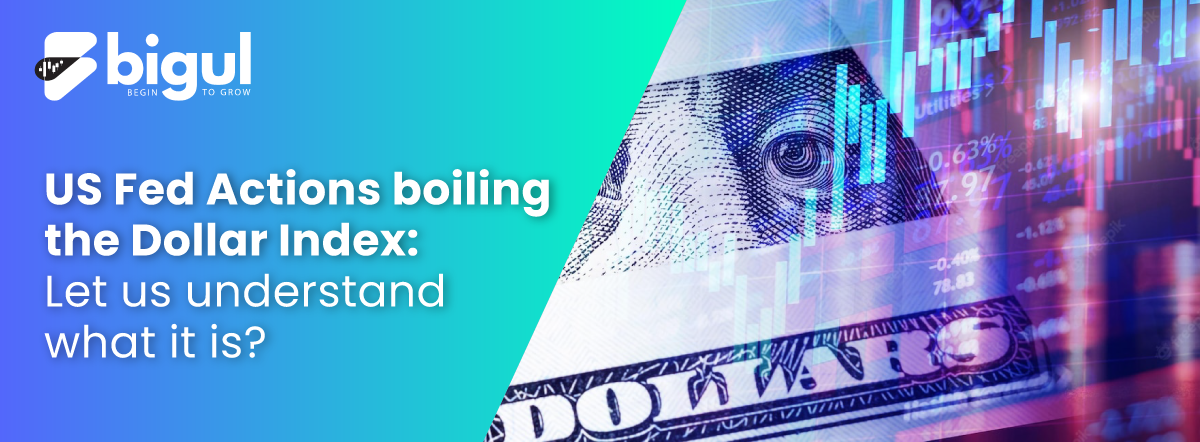US economy is now under severe stress by rising inflation and sluggish economic growth. The job market is slow while the Consumers are spending more in some areas, but cutting back in others. The world is now facing a deep crisis of rising interest rates and soaring inflations in most of the developed and the developing economies too.
In the current week, US markets witnessed the hunter of the boiling inflation data where the number came in around 8.3% versus the expectations of the 8.1% leading to a fall of more than 1300 points in the Dow Jones Industrial Average (DJIA) index in a single trading session. Inflation is the most watched factor by the Federal Reserve which is the central bank of the United States while deciding the interest rate decisions.
After the soaring inflation numbers, the dollar index, which is the most tracked parameter in the currency market touched around 110 levels which is its biggest one-day percentage gain since March 2020. It was still below the recent peak of 110.79 levels but has clearly given signs of further rise in the coming days.
If the dollar index gets strengthen in the US Markets, then it is negative for the Indian rupee as well. The Indian equity markets also track the dollar index quite closely which decided the rupee movement against the dollar in the Indian markets. The rupee depreciates if the dollar index strengthens and vice versa. Let us understand in this context what is the meaning of dollar index and how it is calculated along with its importance.
Also Read | JP Morgan to Include Indian Government Bonds in Emerging Market Debt Index
What is Dollar Index and how it is calculated?
The index is a geometric weighted average of the six foreign currencies. Since the economy of each country is of different size, each weighting is different. In simple terms, the dollar index is a relative measure of the U.S. dollars strength against a basket of six most influential currencies. The countries and their weightages are as follows:
Euro (EUR) 57.6%
Japanese Yen (JPY) 13.6%
British Pound (GBP) 11.9%
Canadian Dollar (CAD) 9.1%
Swedish Krona (SEK) 4.2%
Swiss Franc (CHF) 3.6%
The six currencies included in the dollar index are often referred to as USA’s most significant trading partners, but the index has only been updated once in the year 1999 when the euro was replaced with the German mark, French franc, Italian lira, Dutch guilder, and Belgian franc.
The U.S. Dollar Index been very volatile in the history where it has risen and fallen sharply many times. It made an all-time high in the year 1984 of 165 and an all-time low was nearly 70 in the year 2007. Over the last several years, the U.S. dollar index has been very calm and has been oscillating between 90 and 110. The recent recession talks and the interest rate hikes has again swollen the dollar index towards the recent peak levels.
The dollar index is majorly affected by various macroeconomic factors, including inflation and deflation in the dollar and foreign currencies included in the comparable basket, as well as recessions and economic growth in those countries. In the coming years, it is likely that the existing currencies will be replaced as the index not totally represent the current major U.S. trading partners. It is likely that in the future, currencies such as the Chinese yuan (CNY) and Mexican peso (MXN) will make an entry in the index as China and Mexico are now being the major trading partners with the U.S.
From the Indian context, equity markets will have a close eye on the dollar index in the current scenario it has direct implication in the rupee volatility. If the dollar index strengthens further then the domestic economic calculations have to be assessed again as it effects trade, crude oil prices and other commodity prices in the international markets. Any correction in the index towards 104-105 will be taken positive for the equities while any breach above 112 levels may trigger sell off in the Indian markets as well.
Also Read | ANMI ‘Approves’ Proposal to Extend Index Futures Trading Hours

.jpg)






.jpg)
.jpg)
